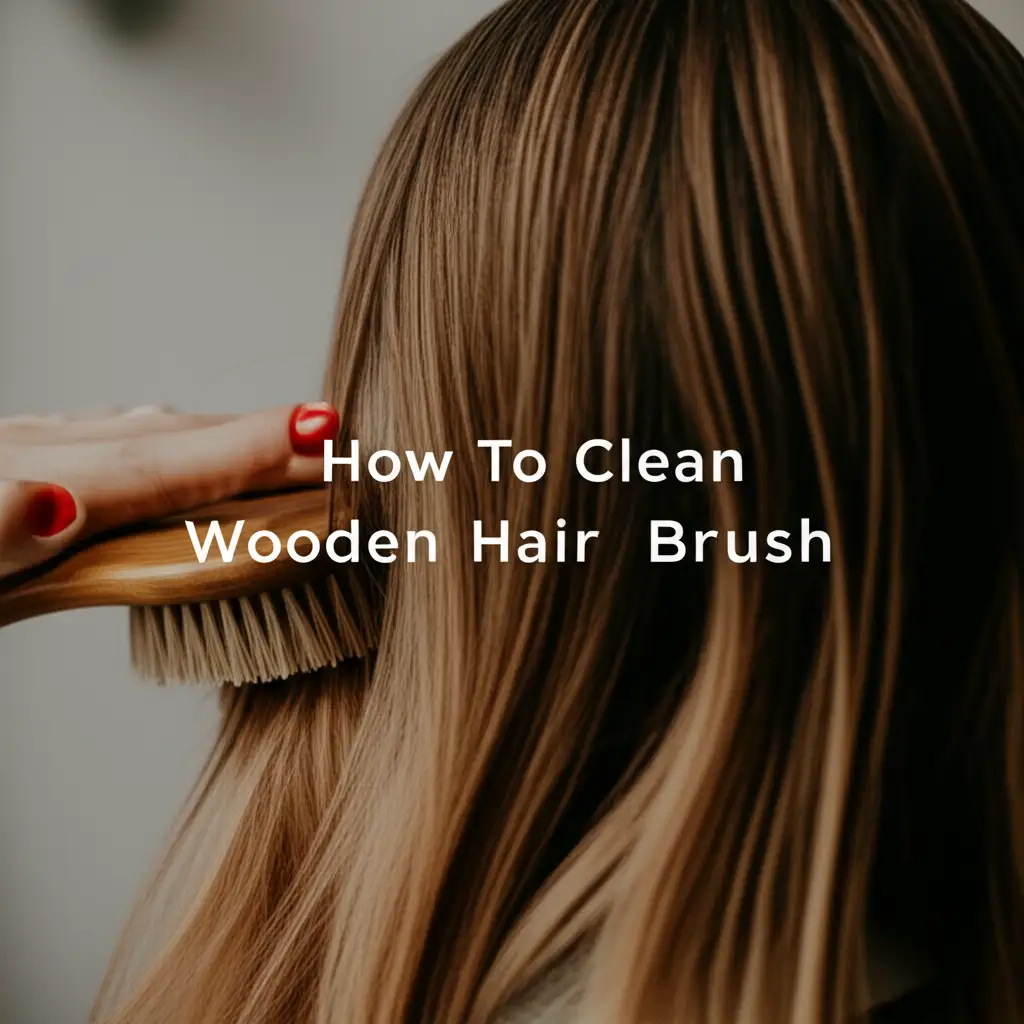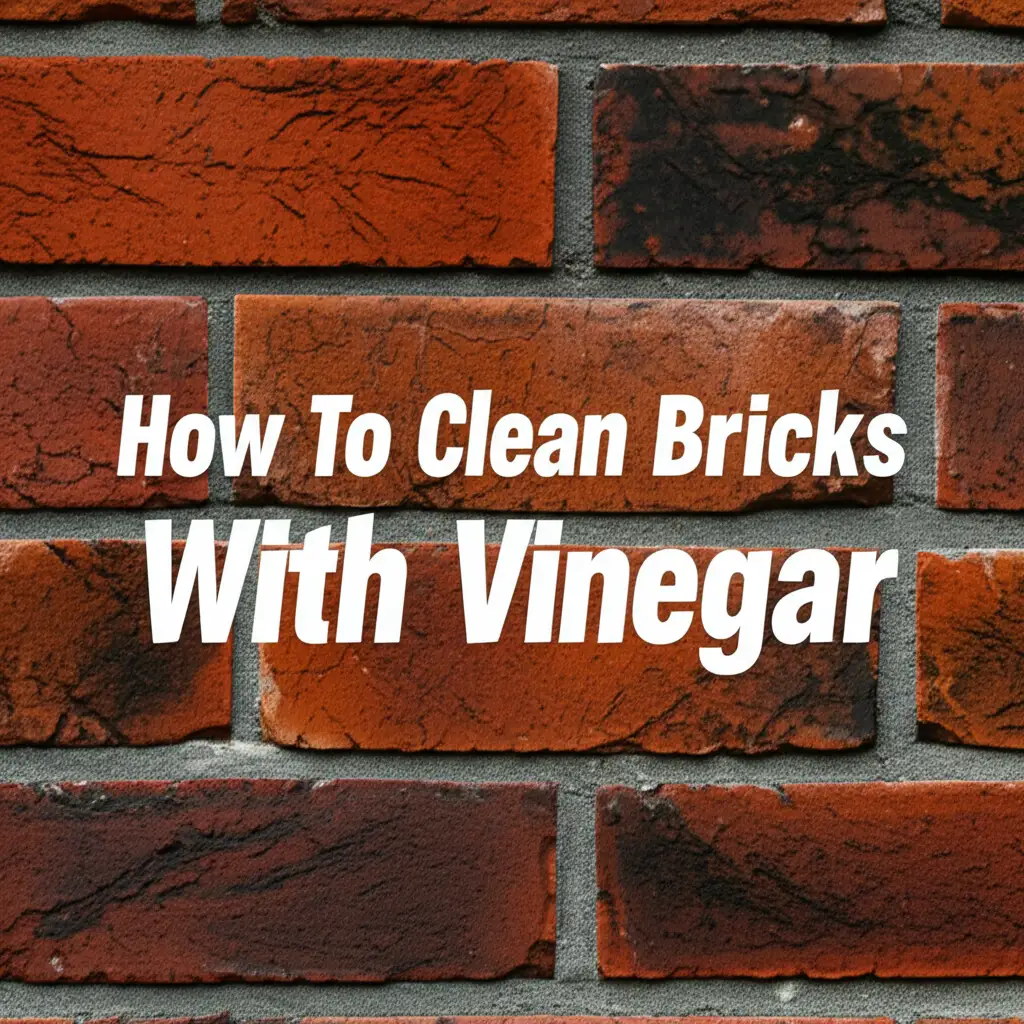· Home Cleaning · 18 min read
How To Clean Wooden Hair Brush

Unlock the Secret to a Spotless Wooden Hair Brush
Do you ever look at your wooden hair brush and wonder if it needs a good scrub? You are not alone. Cleaning your wooden hair brush is an essential step for both your hair health and the brush’s longevity. A dirty brush can spread grime, oil, and old product back onto your clean hair.
Maintaining a clean wooden hair brush helps keep your scalp healthy and ensures your hair looks its best. This article provides a comprehensive guide on how to clean a wooden hair brush properly. We will cover everything from basic hair removal to deep cleaning and important drying techniques. Get ready to give your favorite wooden brush the care it truly deserves.
Takeaway:
- Regularly remove loose hair from your wooden brush.
- Use mild cleaning solutions to prevent wood damage.
- Avoid soaking wooden brushes in water to prevent warping or cracking.
- Always dry your wooden brush thoroughly, bristles down, after cleaning.
- Deep clean your brush monthly to maintain hygiene and effectiveness.
How do you clean a wooden hair brush?
To clean a wooden hair brush, first, remove loose hair with a comb or your fingers. Then, gently scrub the bristles with a mild soap solution and a toothbrush. Avoid soaking the wood. Rinse the bristles carefully, then dry the brush immediately, placing it bristles down on a towel to air dry completely. This method prevents damage and ensures hygiene.
Why Cleaning Your Wooden Hair Brush Matters for Hair Health
Cleaning your wooden hair brush is more than just a chore; it is a vital part of your hair care routine. Many people overlook this step, not realizing the impact a dirty brush has on their hair and scalp. A clean brush improves your hair’s overall health and appearance.
Think about it: every time you brush your hair, your brush collects shed hair, natural oils, dead skin cells, and residue from hair products. Over time, this buildup turns your brush into a breeding ground for bacteria and yeast. Using a dirty brush reintroduces all this grime back into your freshly washed hair. This can make your hair look greasy, lead to scalp irritation, or even cause breakouts along your hairline. Regularly cleaning your wooden hair brush removes these unwanted elements, ensuring your hair remains clean and healthy.
Beyond personal hygiene, cleaning helps preserve the brush itself. Wood is a natural material. It can absorb oils and moisture, leading to deterioration if not cared for properly. Dirt and grime can accumulate around the bristles and the wooden base. This accumulation can weaken the bristles or cause the wood to splinter. A clean brush performs better. Its bristles glide smoothly through your hair, detangling effectively without snagging. This extends the life of your brush, saving you money in the long run. Caring for your tools means they can care for you better.
Proper cleaning prevents mold and mildew growth, which is especially important for wooden items. Wooden brushes, when exposed to moisture, become susceptible to these issues. Mold not only looks unsightly but can also produce odors and potentially cause respiratory problems. Regular cleaning and correct drying techniques stop mold before it starts. By understanding these reasons, you can see why making wooden hair brush cleaning a regular habit is so important.
Essential Tools for Cleaning Wooden Hair Brushes
Gathering the right tools before you start cleaning your wooden hair brush makes the process much easier and more effective. You do not need many specialized items, but having the correct ones ensures a gentle yet thorough clean. Using the wrong tools can damage your wooden brush, so choose wisely. I always make sure I have these simple things on hand.
First, you need a pointed object for removing trapped hair. A rat-tail comb works perfectly for this task. The pointed end easily gets under the hair tangled around the bristles. If you do not have a rat-tail comb, a pair of tweezers or even the tip of a pen can also help. The goal is to lift and loosen the hair so you can pull it out without damaging the bristles or the wood. This initial step is crucial for efficient deep cleaning later on.
Next, you will need a soft-bristled brush for scrubbing. An old toothbrush is ideal for this purpose. Its small head and soft bristles allow you to reach deep between the brush pins or bristles without scratching the wooden base. A soft cleaning brush helps remove product residue and dust particles. You might also consider a dedicated hair brush cleaning tool, which often features a small rake or brush specifically designed for this job. These tools are very effective at removing lint and buildup. For general buildup on any hair brush, you can also use these tools or methods described in articles like how to clean buildup on hair brush.
For cleaning solutions, choose mild options. Gentle dish soap is a go-to choice for most wooden brushes. Mix a tiny amount with warm water to create a mild soapy solution. You can also use a mixture of water and a small amount of shampoo. For a natural approach, a diluted white vinegar solution or baking soda paste works well. For specific natural cleaning techniques, learn more about how to clean hair brushes baking soda or how to clean hair brushes with hydrogen peroxide for deeper sanitation. Avoid harsh chemicals, as they can strip the wood’s finish or damage the bristles. You will also need clean towels for drying and a small bowl for your cleaning solution. Having these items ready ensures a smooth and safe cleaning process for your wooden brush.
Step-by-Step Guide to Removing Loose Hair from Your Wooden Brush
The first and most important step in cleaning any hair brush, especially a wooden one, is to remove all the trapped hair. This prevents hair from becoming wet and clumping during the washing stage, which makes deep cleaning much harder. It also avoids excessive moisture exposure to the wooden parts. I find this part very satisfying, seeing all the accumulated hair come out.
Start by holding your wooden brush firmly in one hand. Using a rat-tail comb or a pair of tweezers, begin at the edge of the brush bristles. Carefully slide the pointed end of the comb under the matted hair. Lift the hair away from the bristles as you go. You can also use scissors to cut through particularly stubborn tangles of hair if needed, but be extremely careful not to cut the bristles themselves. It helps to make small, short strokes to gradually lift the hair.
Once you have loosened a section of hair, gently pull it out of the bristles with your fingers or the comb. Work your way across the entire brush, section by section. You will be surprised by how much hair can accumulate, even after just a few uses. Some people like to use a specialized brush cleaning tool for this step, which often has small rake-like teeth that make quick work of hair removal. This initial dry removal of hair prevents a lot of mess later on. You can also consider how to clean hair out of other areas, such as learning how to clean hair from shower drain or even how to clean hair out of bathroom sink drain, as these cleaning principles often share common techniques for hair removal.
For brushes with densely packed bristles, you might need to make several passes. Some people find it easier to work from one side to the other, while others prefer to work in quadrants. The goal is to get as much hair off the brush as possible before introducing any liquid. This crucial pre-cleaning step sets the stage for a truly effective deep clean, ensuring that your cleaning solutions can reach the base of the bristles where grime often builds up. Take your time with this step; it forms the foundation for a hygienic and well-maintained wooden hair brush.
Deep Cleaning Your Wooden Hair Brush: Mild Solutions and Techniques
Once all the loose hair is removed, it is time to deep clean your wooden hair brush. This step targets the oils, product residue, and dust that cling to the bristles and the base. The key is to use mild solutions and avoid submerging the wood. This protects the natural material of your brush. I always remember that wood and excessive water do not mix well.
Prepare your cleaning solution. A simple and effective option is warm water mixed with a small amount of gentle dish soap. You only need a few drops of soap in a bowl of water to create a mild lather. Alternatively, you can use a diluted shampoo solution, similar to what you use on your hair. For a more natural approach, a mixture of equal parts white vinegar and water can work wonders, especially for removing product buildup and odors. Vinegar is a gentle disinfectant. Another excellent natural cleaner is baking soda. You can make a paste with baking soda and a little water and apply it directly to the bristles. For more details on this, you can check out resources on how to clean hair brushes baking soda.
Now, dip an old toothbrush or a small cleaning brush into your chosen solution. Gently scrub the bristles of your wooden hair brush. Focus on the base of the bristles where dirt and product often accumulate. Work in small sections, making sure to clean all sides of each bristle. Be careful not to let too much water drip onto the wooden handle or base. You are cleaning the bristles, not soaking the wood. If your brush has a cushion base, avoid pressing too hard, as water can get trapped underneath. The goal is to clean the bristles without saturating the wood. This method is effective for maintaining the brush’s integrity while ensuring thorough cleaning.
After scrubbing, rinse the bristles carefully under a gentle stream of cool water. Make sure the water only touches the bristles and not the wooden parts. You can hold the brush bristles-down to help water run off. Do not let water pool around the wooden base. Shake off excess water. Then, immediately proceed to the drying step. This careful washing technique prevents warping, cracking, or mold growth on your beautiful wooden hair brush.
Disinfecting and Sanitizing Wooden Hair Brushes
Beyond just cleaning, disinfecting your wooden hair brush periodically adds an extra layer of hygiene. This step helps eliminate bacteria and fungi that might remain even after basic cleaning. It is especially important if you have been sick or if you share your brush. I often do this once a month for peace of mind.
One effective and safe way to sanitize a wooden hair brush is by using rubbing alcohol or hydrogen peroxide. For rubbing alcohol, lightly dampen a clean cloth or a cotton ball with the alcohol. Carefully wipe down the bristles, making sure to get into the spaces between them. Alcohol evaporates quickly, which is beneficial for wooden brushes. Avoid letting the alcohol sit on the wooden handle for too long, as it can dry out the wood over time. Focus only on the bristles and the cushion. For more options using hydrogen peroxide, you can refer to articles discussing how to clean hair brushes with hydrogen peroxide.
Another natural disinfecting option is tea tree oil. Tea tree oil has natural antiseptic properties. Mix a few drops of pure tea tree oil with about a cup of water in a spray bottle. Lightly mist the bristles of your brush with this solution. Let it sit for a few minutes, then wipe clean with a dry cloth. Make sure not to oversaturate the brush. This method leaves a fresh, clean scent and helps combat germs naturally. Just like with cleaning solutions, moderation is key when applying disinfectants to wooden brushes.
For brushes with a particularly stubborn smell or persistent grime, a quick, gentle rinse with a diluted solution of hydrogen peroxide can be considered. Mix one part 3% hydrogen peroxide with three parts water. Dip only the bristles into this solution for a few seconds. Do not soak the entire brush. Immediately rinse the bristles under cool water, holding the brush bristles-down. This brief contact provides powerful sanitization without prolonged exposure to moisture. Always follow up with thorough drying, which is crucial for wooden brushes to prevent any damage.
Drying and Maintaining Your Wooden Hair Brush
Proper drying is the single most critical step when cleaning a wooden hair brush. Failing to dry it correctly can lead to irreparable damage, such as warping, cracking, or mold growth. Wood is absorbent, and prolonged moisture exposure is its enemy. I have learned this the hard way with previous wooden items.
After cleaning and rinsing, first, gently shake off any excess water from the bristles. Then, use a clean, dry towel to pat the bristles and the base of the brush. Try to absorb as much moisture as possible. Pay special attention to the area where the bristles meet the wooden base, as water can collect there. Do not rub the wood vigorously, just blot it dry. This initial towel drying helps speed up the overall drying process.
Once towel-dried, place your wooden hair brush in a well-ventilated area to air dry completely. The best position for a wooden brush to dry is bristles-down. This allows any remaining water to drip away from the wooden base and prevent it from pooling inside the cushion or around the pins. You can lean it against a wall, place it on a clean towel, or even use a mesh drying rack. Avoid direct sunlight or placing it near a heat source like a radiator or a hairdryer. Extreme heat can cause the wood to crack or warp. Patience is important here; ensure the brush is completely dry before using it again or storing it away. This might take several hours, or even overnight, depending on humidity levels.
Regular maintenance extends the life of your wooden brush between deep cleans. After each use, take a moment to pull out any loose hair from the bristles. This prevents hair from building up and becoming matted, making the next cleaning easier. Store your wooden brush in a dry place, away from excessive humidity or direct moisture, like a steamy bathroom counter. Keeping it in a drawer or on a vanity is ideal. If you notice any stubborn residue building up on your brush, you might need a more targeted approach, like the one described for general hair brush buildup on how to clean buildup on hair brush. Occasionally, you can lightly wipe the wooden handle with a natural wood oil (like mineral oil or linseed oil) to keep the wood nourished and prevent it from drying out. This occasional conditioning helps preserve the beauty and integrity of your wooden brush for years to come.
Common Mistakes to Avoid When Cleaning Wooden Brushes
Cleaning a wooden hair brush requires a gentle approach because wood is a natural material. Making common mistakes can easily damage your brush, reducing its effectiveness and lifespan. I have certainly made some of these errors myself when I first started cleaning. Knowing what to avoid is as important as knowing what to do.
One of the biggest mistakes is soaking your wooden hair brush in water. Wood absorbs water, and prolonged exposure causes it to swell. This swelling can lead to cracking, warping, or even mold growth within the wood grain or under the bristle cushion. Instead of soaking, focus on spot cleaning the bristles only. Use a damp cloth or toothbrush to apply your cleaning solution, keeping water away from the wooden base and handle as much as possible. This targeted approach ensures the bristles get clean without compromising the wood.
Another frequent error is using harsh chemicals or abrasive cleaners. Bleach, strong detergents, or scrubbing powders can strip the natural oils from the wood, dull its finish, or even degrade the bristles. They can also leave residues that irritate your scalp or hair. Stick to mild soap, diluted vinegar, or baking soda solutions. These are effective without being destructive. Remember, gentleness is key when dealing with wood. This principle applies to cleaning other wooden items too, such as learning how to clean wooden chopping board.
Improper drying is another common pitfall. Leaving your wooden brush wet or allowing water to pool around the base promotes mold and mildew. Never place your brush bristles-up to dry, as this traps water within the cushion. Avoid using direct heat, like a hairdryer, to speed up drying, as extreme heat can also cause cracking or warping. Always pat the brush dry with a towel and then let it air dry completely, bristles-down, in a well-ventilated area. Patience during the drying phase is crucial for the brush’s longevity. By avoiding these common mistakes, you ensure your wooden hair brush remains in excellent condition, serving you well for many years.
How to Tell if Your Wooden Hair Brush Needs Cleaning
Knowing when your wooden hair brush needs a clean is crucial for maintaining hygiene and effective hair care. It is not always obvious, but a few signs indicate it is time for a thorough cleaning. Regularly checking your brush helps prevent a buildup of grime. I find a quick visual inspection often tells me all I need to know.
First, look closely at the bristles. If you see visible lint, dust, or hair tangled around them, your brush definitely needs attention. These particles accumulate over time and can be transferred back to your hair. Hair strands trapped at the base of the bristles are a clear sign. This buildup also makes the brush less effective at detangling and styling.
Second, check for a dull or greasy appearance on the bristles or the brush base. Natural oils from your hair, along with styling product residue, can coat the bristles. This creates a sticky film. When the bristles feel slick or look grimy, it is time for a wash. This greasy residue can also transfer to clean hair, making it look weighed down. Similarly, if you notice an unpleasant odor coming from your brush, it is a strong indicator of bacterial or fungal growth. This smell is often caused by trapped moisture, oils, and dead skin cells. An odor means a deep clean and proper drying are immediately necessary.
Finally, consider how your hair feels after brushing. If your hair appears less shiny, gets greasy faster, or feels heavy shortly after brushing, your dirty brush might be the culprit. A clean brush should leave your hair feeling light and fresh. If you notice your brush is not performing as well as it used to, or if it feels like it is dragging on your hair, buildup is likely the cause. Making a habit of checking for these signs will help you keep your wooden hair brush in top condition.
FAQ Section
How often should I clean my wooden hair brush?
You should remove loose hair after every use. Deep clean your wooden hair brush at least once a month. If you use many hair products or have oily hair, cleaning it every two weeks is beneficial. Regular cleaning prevents buildup and maintains brush hygiene.
Can I use soap and water on a wooden hair brush?
Yes, you can use soap and water, but with caution. Mix a very small amount of mild dish soap with warm water. Dip only the bristles into the solution and gently scrub. Avoid soaking the wooden handle or base directly. Rinse the bristles carefully and dry immediately to prevent damage.
What should I do if my wooden brush gets soaked?
If your wooden brush accidentally gets soaked, pat it dry immediately with a towel. Then, place it bristles-down on a clean, dry towel in a well-ventilated area. Allow it to air dry completely for several hours, or even overnight. Do not use heat to dry it, as this can cause warping.
How do I remove product buildup from my wooden brush?
To remove product buildup, use a mixture of warm water and a little bit of mild shampoo or white vinegar. Scrub the bristles with an old toothbrush, focusing on sticky areas. For stubborn spots, a paste of baking soda and water can be effective. Rinse only the bristles carefully and dry thoroughly.
Can a dirty hair brush cause hair problems?
Yes, a dirty hair brush can cause hair problems. It can reintroduce old oils, dead skin cells, and product residue back into clean hair, making it look greasy. It can also lead to scalp irritation, dandruff, or even bacterial growth, negatively impacting hair health and appearance over time.
Is it safe to use alcohol to sanitize a wooden hair brush?
You can use rubbing alcohol to sanitize the bristles of your wooden hair brush. Apply it with a cotton ball or cloth, wiping the bristles carefully. Alcohol evaporates quickly, reducing moisture exposure. Avoid prolonged contact with the wooden parts, as it can dry out the wood over time.
Conclusion
Keeping your wooden hair brush clean is a simple yet impactful habit for healthy hair and a long-lasting brush. We have covered the importance of regular cleaning, the right tools to use, and a step-by-step process for effective cleaning. Remember the crucial steps: remove loose hair, use mild solutions, and prioritize proper drying. Avoiding common mistakes like soaking the brush or using harsh chemicals will protect your brush’s integrity.
A clean wooden hair brush helps prevent greasy hair, scalp irritation, and ensures your styling tools perform their best. By following these guidelines on how to clean a wooden hair brush, you extend its life and enhance your hair care routine. Make brush cleaning a regular part of your self-care. Your hair will thank you. Start today and enjoy the benefits of a truly clean and effective brushing experience.
- wooden hair brush care
- hair brush hygiene
- natural cleaning
- brush maintenance
- hair brush cleaning tips




